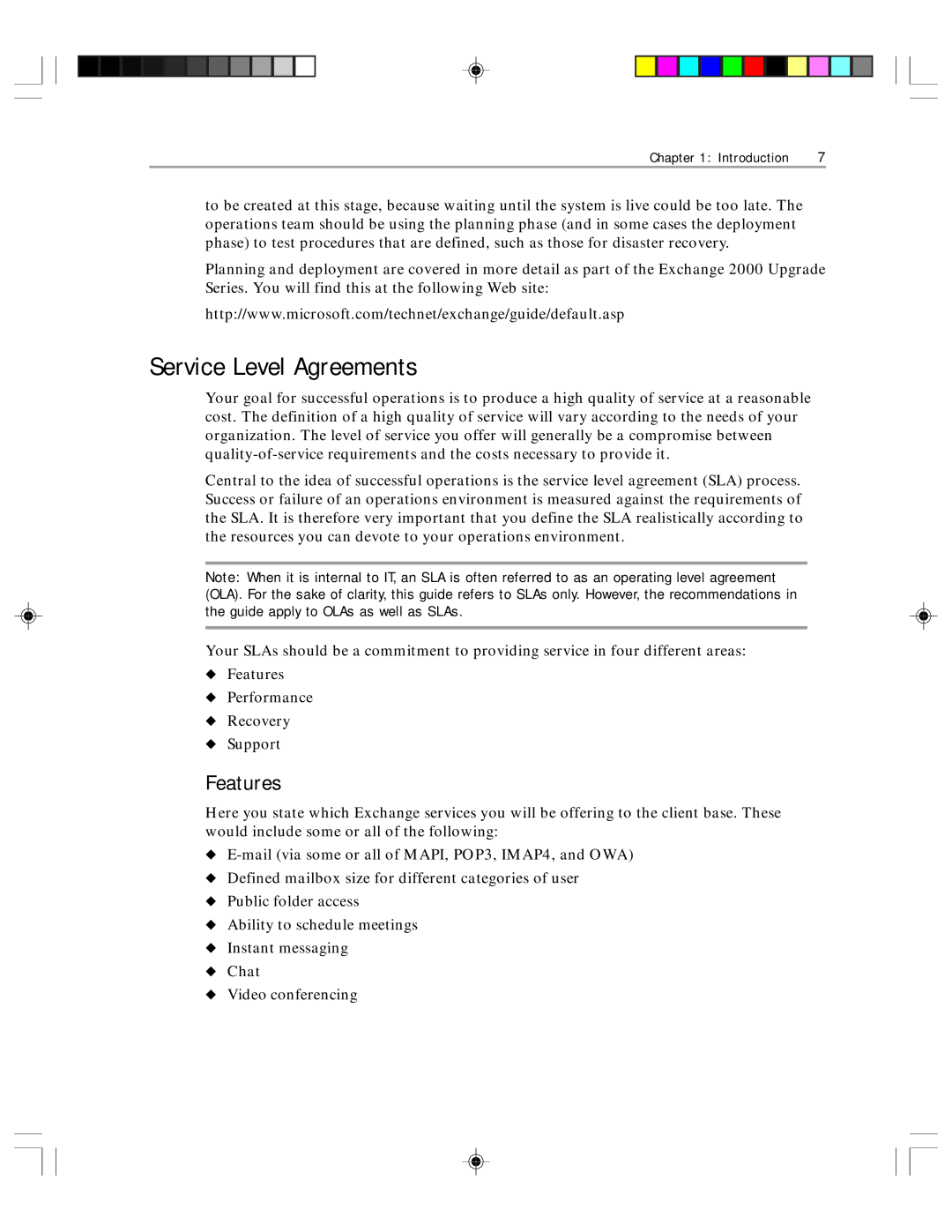
Chapter 1: Introduction | 7 |
to be created at this stage, because waiting until the system is live could be too late. The operations team should be using the planning phase (and in some cases the deployment phase) to test procedures that are defined, such as those for disaster recovery.
Planning and deployment are covered in more detail as part of the Exchange 2000 Upgrade Series. You will find this at the following Web site:
http://www.microsoft.com/technet/exchange/guide/default.asp
Service Level Agreements
Your goal for successful operations is to produce a high quality of service at a reasonable cost. The definition of a high quality of service will vary according to the needs of your organization. The level of service you offer will generally be a compromise between
Central to the idea of successful operations is the service level agreement (SLA) process. Success or failure of an operations environment is measured against the requirements of the SLA. It is therefore very important that you define the SLA realistically according to the resources you can devote to your operations environment.
Note: When it is internal to IT, an SLA is often referred to as an operating level agreement (OLA). For the sake of clarity, this guide refers to SLAs only. However, the recommendations in the guide apply to OLAs as well as SLAs.
Your SLAs should be a commitment to providing service in four different areas:
◆Features
◆Performance
◆Recovery
◆Support
Features
Here you state which Exchange services you will be offering to the client base. These would include some or all of the following:
◆
◆Defined mailbox size for different categories of user
◆Public folder access
◆Ability to schedule meetings
◆Instant messaging
◆Chat
◆Video conferencing
